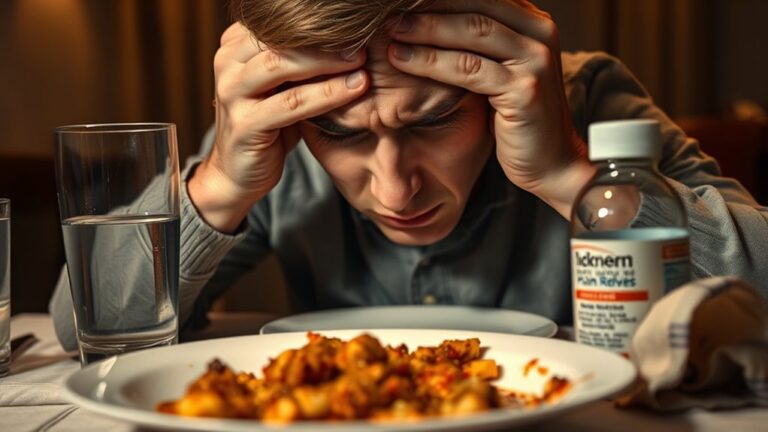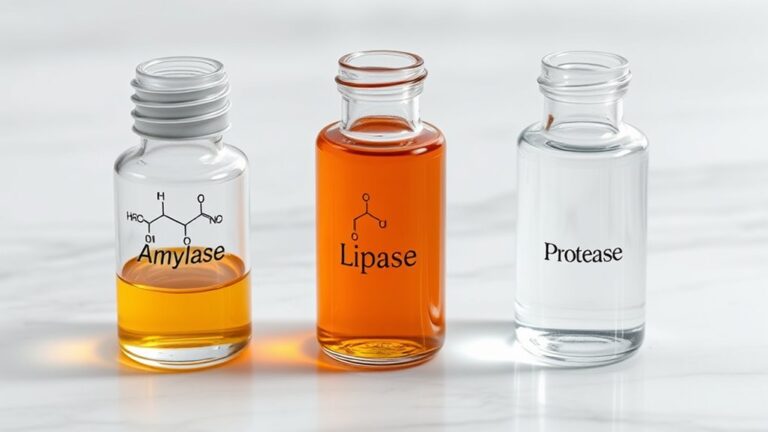If you believed all diarrhea appeared identical, you’re in for a shock! The colors pink and red can actually reveal quite a bit about what’s occurring inside your body. You may be curious, however, how can one shade be so harmless while the other raises alarms? Grasping the variations is vital for realizing when to relax and when to call for help. Let’s investigate the causes, symptoms, and what each color may indicate for your health.
Diarrhea Color Variations
In regards to grasping the hue of diarrhea, identifying the variances can assist you in interpreting what’s occurring in your body. For instance, should you notice bright red in your stool, it might indicate fresh bleeding from the rectal area, possibly due to hemorrhoids or anal fissures. This can undoubtedly be alarming!
On the other hand, pink diarrhea often stems from milder sources, like irritation or consuming foods such as beets. While it’s essential to remain vigilant, recall that red diarrhea typically signals a more serious issue, like inflammatory bowel disease or infections.
Should you notice blood in your stool persistently, you ought to seek medical attention promptly to rule out any serious conditions that could require treatment.
What Causes Pink Diarrhea?
Pink diarrhea can be a surprising sight, but grasping its causes can help ease your worries. It could suggest lower gastrointestinal bleeding from minor issues like hemorrhoids or anal fissures. Certain foods and drinks, such as beets or those with artificial dyes, can also temporarily tint your stool pink. Infections like salmonella or campylobacter could lead to inflammation, resulting in pink-tinged diarrhea.
| Possible Causes | Additional Remarks |
|---|---|
| Bleeding from Hemorrhoids | Often minor but can cause pinkish stool. |
| Anal Fissures | Can contribute to pink coloring in stool. |
| Foods & Dye | Certain foods can dye your stool unexpectedly. |
Additionally, severe dietary imbalances or rapid digestion can mix food pigments with your stool, creating that pink hue. Stay mindful of any changes!
What Causes Red Diarrhea?
At the time you notice red diarrhea, it can understandably raise alarm bells, and it’s crucial to grasp why it occurs. Conditions like hemorrhoids and anal fissures can lead to lower gastrointestinal bleeding, causing this alarming symptom.
Inflammatory issues like ulcerative colitis or Crohn’s disease often result in chronic red diarrhea due to intestinal inflammation. Infections from bacteria such as E. coli or Shigella can also produce bloody diarrhea, usually accompanied by fever and cramps.
Additionally, food choices—think beets, tomato products, or even red food coloring—can create red stools but aren’t concerning. Fast digestion from conditions like celiac disease could lead to bright red diarrhea, too, resulting from undigested bile or blood.
Keep these in mind!
Symptoms Associated With Pink Diarrhea
While noticing changes in your stool can be worrisome, pink diarrhea often signals something less severe than you could anticipate. This color typically indicates minor bleeding in the lower digestive tract, often due to irritation or small fissures.
Whenever you observe pink diarrhea, it could come from a small amount of fresh blood mixing with watery stool, creating a diluted red hue. You may also experience mild abdominal discomfort, but sometimes there are no noticeable symptoms.
Should you notice blood in the stool that’s red or maroon, it’s essential to think about possible causes. Should your pink diarrhea persist, don’t hesitate to see a doctor to rule out infections or more serious fundamental conditions.
Symptoms Associated With Red Diarrhea
Seeing red in your stool can be alarming, and it’s vital to understand what’s really going on. Red diarrhea often indicates lower gastrointestinal bleeding, possibly caused by hemorrhoids or inflammatory bowel disease.
Should you notice streaks, rectal tears from frequent bowel movements could be the culprit. Dark red or maroon stool may point to issues like diverticulitis or ulcers.
Accompanying symptoms like fever or abdominal pain could signal infections, such as Salmonella or E. coli. Keep in mind, large volumes of red diarrhea may suggest rapid transit bleeding.
Should you’re experiencing any of these symptoms, especially should they persist, it’s essential to consult a healthcare provider. Your health should always take priority over worrying!
The Importance of Blood Concentration
Comprehending blood concentration in your stool is vital, especially when examining gastrointestinal concerns. Grasping these variations enables you to recognize possible causes of rectal bleeding.
Here are some key points about blood concentration in your stool:
- Pink stools often signify slight blood loss due to irritation in the lower GI tract.
- Red stools typically point to more significant gastrointestinal bleeding from deeper sources.
- The hemoglobin content in the stool can disclose whether a severe condition exists.
- Bright red blood generally stems from the colon or anus, while pink shades could indicate milder inflammation.
Recognizing stool colors and their meanings can be pivotal for your well-being. Should you observe any alterations, you may consider consulting a healthcare provider for further clarity.
When to Seek Medical Advice for Pink Diarrhea
Provided you notice pink diarrhea, it’s natural to feel a bit anxious about what that could mean for your health. It’s essential to seek medical advice should this persist beyond 48 hours or worsen, as it could indicate an infection or inflammation.
Pay close attention should you observe severe abdominal pain, fever, or signs of dehydration like dizziness. Frequent occurrences of pink stool might signal issues like colitis or hemorrhoids, so consulting a doctor is wise.
Should you see pink streaks or clots, it’s vital to get evaluated for potential lower GI bleeding or rectal bleeding. Always be cautious, especially with infants or immunocompromised individuals, who could face higher risks of complications.
When to Seek Medical Advice for Red Diarrhea
At the time it comes to red diarrhea, it’s crucial to identify signs that require urgent medical attention. Should you encounter any of these symptoms, don’t delay in consulting a healthcare provider.
- Persistent bright red blood in your stool
- Severe abdominal pain or dizziness
- Fever over 101°F (38°C) accompanying your symptoms
- Black or tarry stools, which could signal an upper GI bleed
Each of these signs could indicate a severe problem, such as a bacterial infection or internal bleeding.
Should red diarrhea persist beyond two days without improvement, it’s also time for a medical evaluation.
Keep in mind, prompt action can significantly impact your health and peace of mind! Don’t hesitate—seek urgent care should you need it.
Common Conditions Linked to Pink Diarrhea
Red diarrhea could grab your attention swiftly due to its startling appearance, but pink diarrhea often catches people off guard, leaving you pondering what could be occurring.
One common cause is a Salmonella infection, which can lead to inflammation and minor bleeding in your intestines. Sometimes, food dyes from candies or drinks could create a pinkish tint in your stool without any medical concern.
Don’t overlook anal fissures, as they could cause mild bleeding mixed with diarrhea. Conditions like inflammatory bowel disease (IBD) or ulcerative colitis can also produce pink stool due to mucosal irritations.
Additionally, certain antibiotics, such as rifampin, can bring about a pink hue in your diarrhea as a side effect, signaling inflammation in your gut.
Common Conditions Linked to Red Diarrhea
At times regarding digestive health, noticing red diarrhea can be alarming, and it’s vital to grasp what could be causing it. Several conditions can lead to this issue, often indicating something serious. Here are a few common culprits:
- Bacterial infections such as Shigella and Campylobacter, causing fever and cramps.
- Norovirus, a viral infection, might lead to red-tinged diarrhea due to intestinal irritation.
- Inflammatory bowel diseases like ulcerative colitis and Crohn’s disease, causing chronic inflammation and visible blood.
- E. coli infections from tainted food can result in severe, life-threatening diarrhea.
Anal fissures or hemorrhoids could also introduce fresh blood. Keep in mind, while it might be alarming, recognizing these triggers can help you seek timely medical attention.
Diagnosing the Cause of Diarrhea Color
At the time you notice various colors in your stool, it can be confusing and slightly alarming. Diagnosing the cause of diarrhea color involves evaluating several factors related to the GI tract. Pink diarrhea could imply lower GI bleeding or hemorrhoids, while red diarrhea frequently signals more severe active bleeding from the rectum and anus.
Here’s a quick comparison:
| Color | Possible Causes |
|---|---|
| Pink Diarrhea | Infections, ulcers, fecal occult blood test, colonoscopy |
| Red Diarrhea | Hemorrhoids, fissures, anoscopy |
A fecal occult blood test and colonoscopy can assist in detecting issues like diverticular disease or ulcers for pink diarrhea. In contrast, red diarrhea might need anoscopy to examine for fissures or hemorrhoids. Grasping these signs is crucial for your health.
Treatment Options for Pink Diarrhea
At times you’re handling pink diarrhea, it’s essential to recognize that many others share this experience, and there are effective treatment options available to help you feel better.
Initially, think about increasing your fiber intake and hydration to soften stools. In case you suspect mild rectal bleeding due to hemorrhoids or anal fissures, over-the-counter anti-inflammatory medications could alleviate your discomfort.
Should a bacterial infection be causing your symptoms, antibiotics from your clinician may be necessary. For persistent situations, a stool test or colonoscopy might help rule out inflammatory bowel disease (IBD).
Here are some tips to think about:
- Increase hydration and fiber intake
- Use anti-inflammatory medications
- Avoid spicy foods and alcohol
- Apply topical ointments for relief
Treatment Options for Red Diarrhea
Experiencing red diarrhea can be concerning, and it’s essential to understand that you’re not alone in this struggle. Treatment depends on the cause.
In case it’s due to bacterial infections like Shigella, doctors could prescribe antibiotics such as ciprofloxacin. Should you be facing inflammatory bowel disease (IBD), anti-inflammatory medications like mesalamine can help.
To combat dehydration, oral rehydration solutions, like Pedialyte, are vital. For relief from bleeding due to anal fissures, consider fiber supplements or stool softeners like psyllium.
In persistent cases caused by colorectal cancer or diverticular issues, endoscopic or surgical intervention could be necessary. Always consult a healthcare professional to find the best course of action customized to your needs.





